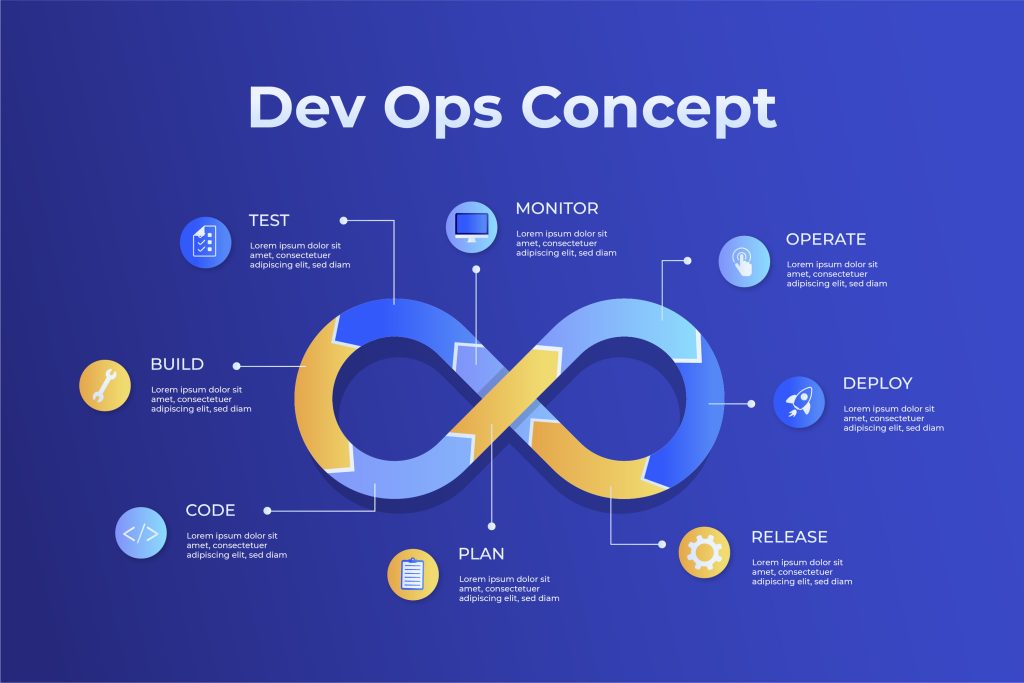Understanding DevOps: Meaning, Practices, and Tools

Introduction
DevOps is a transformative approach that has reshaped how organizations develop, deploy, and maintain software. Combining “Development” and “Operations,” DevOps represents a cultural and technical shift aimed at fostering collaboration, automation, and continuous improvement in the software development lifecycle. This article explores the meaning of DevOps, its core principles, practices, tools, and real-world applications, with a focus on how tools like Monday.com support DevOps workflows.
At its core, DevOps bridges the gap between software developers and IT operations teams, traditionally siloed groups with distinct responsibilities. By integrating these roles, it enables organizations to deliver high-quality software faster, respond to market demands efficiently, and enhance customer satisfaction. This article provides a comprehensive guide to understanding DevOps, its benefits, challenges, and how modern tools facilitate its adoption.
What is DevOps?

DevOps is a software development methodology that integrates software development (Dev) and IT operations (Ops) to streamline the entire software lifecycle—from planning and coding to testing, deployment, and monitoring. The term emerged around 2007 as a response to the inefficiencies of traditional software development models, where developers and operations teams worked in isolation, leading to miscommunication, delays, and errors.
Emphasizes:
- Collaboration: Breaking down silos between development, operations, quality assurance, and security teams to foster shared responsibility.
- Automation: Automating repetitive tasks like testing, integration, and deployment to increase efficiency and reduce errors.
- Continuous Improvement: Iteratively refining processes, tools, and products based on feedback and performance metrics.
- Rapid Delivery: Enabling frequent, reliable software releases through practices like continuous integration and continuous delivery (CI/CD).
According to researchers Len Bass, Ingo Weber, and Liming Zhu, DevOps is “a set of practices intended to reduce the time between committing a change to a system and the change being placed into normal production, while ensuring high quality.” This definition highlights DevOps’ focus on speed, quality, and collaboration.
Lifecycle
The DevOps lifecycle is often represented as an infinity loop, symbolizing its continuous and iterative nature. The lifecycle includes the following phases:
Phase-Description
Plan – Define features, create backlogs, and prioritize tasks based on user feedback
and business needs.
Code – Write and test code, often using practices like test-driven development (TDD)
and pair programming.
Build – Compile code into executable artifacts, integrating changes into a shared
repository.
Test – Automate testing to ensure code quality, catching bugs early in the development process.
Release – Manage release processes with automated gates for scalable, repeatable deployments.
Deploy – Automatically deploy code to staging or production environments.
Operate – Maintain and monitor applications in production to ensure reliability and performance.
Monitor – Collect telemetry and feedback to identify issues and inform future improvements.
Each phase is interconnected, with all team members contributing to varying degrees, ensuring a cohesive and efficient workflow.
Core Principles
DevOps is guided by several key principles that drive its effectiveness:
- Shared Ownership: Teams take collective responsibility for the entire software lifecycle, from ideation to production support.
- Workflow Automation: Automating manual processes like testing, deployment, and monitoring reduces errors and frees up time for strategic work.
- Rapid Feedback: Continuous monitoring and testing provide immediate feedback, enabling teams to address issues quickly.
- Customer-Centric Focus: DevOps aligns development with customer needs, ensuring frequent delivery of valuable features.
- Continuous Improvement: Teams iteratively refine processes and tools based on performance metrics and user feedback.

These principles foster a culture of collaboration, agility, and innovation, enabling organizations to adapt to changing market demands.
Benefits
Adopting DevOps offers numerous advantages that enhance organizational efficiency and software quality:
Benefit Description
Faster Time to Market CI/CD pipelines enable frequent, reliable releases, reducing time from
ideation to launch.
Improved Collaboration Cross-functional teams communicate effectively, reducing silos and
friction.
Enhanced Quality Automated testing and continuous integration catch bugs early,
improving software stability.
Increased Automation Automating repetitive tasks reduces human error and boosts productivity.
Better Scalability DevOps practices enable infrastructure to scale efficiently with business
needs.
Higher Customer Satisfaction Rapid delivery of features and updates aligns with customer expectations.
Cost Efficiency Optimized resource utilization and reduced downtime lead to cost
savings.
These benefits make it a critical methodology for organizations aiming to stay competitive in fast-paced markets.
Key Practices
DevOps relies on several practices to achieve its goals of speed, quality, and collaboration:
Continuous Integration (CI)
Continuous integration involves frequently merging code changes into a central repository, followed by automated builds and tests. This practice catches bugs early, improves code quality, and reduces integration issues. Tools like Jenkins, GitLab CI, and CircleCI are commonly used for CI.
Continuous Delivery (CD)
Continuous delivery extends CI by automatically deploying code changes to testing or production environments after passing automated tests. This ensures that code is always in a deployable state, enabling rapid releases. Tools like GitHub Actions and Azure DevOps support CD pipelines.
Continuous Monitoring
Continuous monitoring provides real-time visibility into application performance and health. By collecting telemetry data, setting alerts, and analyzing logs, teams can identify and resolve issues before they impact users. Tools like Prometheus, Datadog, and Splunk are popular for monitoring.
Infrastructure as Code (IaC)
IaC involves managing infrastructure through code, enabling automated provisioning and configuration. This practice improves scalability and reduces manual errors. Tools like Terraform, Ansible, and AWS CloudFormation are widely used for IaC.
GitOps
GitOps uses Git repositories to manage infrastructure and application configurations. Changes are version-controlled, enabling traceability and easy rollbacks. This practice enhances security and visibility in cloud-hosted systems.
DevOps Tools and Monday.com
A robust DevOps toolchain is essential for implementing DevOps practices. Below is a table of popular tools categorized by their role in the DevOps lifecycle:
| Category | Tools | Purpose |
| Version Control | Git, GitHub, GitLab, Bitbucket | Manage code and configuration changes. |
| CI/CD | Jenkins, GitLab CI, CircleCI, GitHub Actions | Automate integration and deployment. |
| Monitoring | Prometheus, Datadog, Splunk, New Relic | Track application performance and health. |
| Infrastructure as Code | Terraform, Ansible, AWS CloudFormation | Automate infrastructure provisioning. |
| Collaboration | Monday.com, Slack, Microsoft Teams | Facilitate team communication and planning |
Monday.com as a DevOps Tool
Monday.com, primarily known as a project management platform, has emerged as a valuable tool for DevOps teams. It supports DevOps workflows by providing a centralized platform for planning, tracking, and collaboration. Key features include:
- Work Management: Create and manage backlogs, track sprints, and visualize progress with Kanban boards and Gantt charts.
- Automation: Automate repetitive tasks like task assignments, status updates, and notifications, streamlining workflows.
- Integration: Connect with tools like GitHub, Jira, and Slack to centralize DevOps processes.
- Real-Time Collaboration: Enable cross-functional teams to communicate, share updates, and align on goals.
For example, a DevOps team can use Monday.com to manage a sprint backlog, assign tasks to developers and operations engineers, and track CI/CD pipeline progress. By integrating with GitHub, teams can receive real-time updates on code commits and deployments, ensuring alignment across the lifecycle.
DevOps vs. Related Methodologies
DevOps is often compared to other methodologies like Agile, DevSecOps, and Site Reliability Engineering (SRE). The table below outlines their differences:
Agile: Focuses on iterative development and customer feedback but lacks the operational focus of DevOps.
DevSecOps: Extends DevOps by embedding security practices throughout the lifecycle, ensuring secure software delivery.
SRE: Combines software engineering with operations to ensure system reliability, often overlapping with DevOps practices.
Real-World Applications
It has been adopted across industries, delivering measurable results. Here are two case studies:
Case Study 1: Financial Institution
A large bank automated its build-test-deploy pipeline using Jenkins and Ansible, reducing code approval time from weeks to hours. By integrating security checks (DevSecOps), the bank improved compliance while accelerating releases, resulting in faster delivery of customer-facing features.
Case Study 2: E-Commerce Platform
An e-commerce company used GitHub Actions for CI/CD and Monday.com for sprint planning. By automating deployments and tracking progress in real-time, the company reduced time-to-market by 30% and improved customer satisfaction through frequent feature updates.
The Role of AI and ML in DevOps
Artificial Intelligence (AI) and Machine Learning (ML) are enhancing DevOps by:
- Analyzing Data: AI processes large volumes of data from testing, deployment, and monitoring to provide actionable insights.
- Predicting Issues: ML identifies patterns in code or logs to detect potential bugs or security threats early.
- Automating Tasks: AI-driven tools suggest optimizations for workflows, reducing manual effort.
For example, tools like Datadog use AI to analyze infrastructure alerts, automating tasks that typically require human expertise.

How to Adopt DevOps
Adopting DevOps requires a structured approach:
- Assess Current Processes: Evaluate existing workflows, tools, and team structures to identify gaps.
- Build a DevOps Culture: Foster collaboration, shared ownership, and a customer-centric mindset.
- Invest in Tools: Select tools like Monday.com, Jenkins, or Terraform to support automation and collaboration.
- Train Teams: Provide training on DevOps practices, tools, and cultural principles.
- Start Small: Pilot DevOps with a small project, then scale based on lessons learned.
- Measure and Optimize: Use metrics like deployment frequency and mean time to recover to track progress and improve.
Future Trends in DevOps
The DevOps landscape is evolving with emerging trends:
- Platform Engineering: Building internal developer platforms to streamline DevOps workflows.
- AI-Driven DevOps: Increased use of AI for automation and predictive analytics.
- GitOps Adoption: Growing use of Git for managing infrastructure and configurations.
- Zero Trust Security: Integrating zero-trust principles into DevOps for enhanced security.
These trends indicate that DevOps will continue to evolve, driven by technological advancements and organizational needs.
Conclusion
DevOps is more than a set of tools or practices; it’s a cultural shift that unifies development and operations to deliver high-quality software at speed. By embracing collaboration, automation, and continuous improvement, organizations can overcome traditional silos, reduce time-to-market, and enhance customer satisfaction. Tools like Monday.com play a pivotal role by providing a platform for planning, tracking, and integrating DevOps workflows.
As DevOps continues to evolve, incorporating AI, GitOps, and platform engineering, organizations must stay adaptable, invest in training, and select the right tools to remain competitive. Whether you’re a small startup or a large enterprise, adopting DevOps can transform your software development process, delivering value to both your team and your customers.
You might also be interested in Fundamentals of Business Process Management



